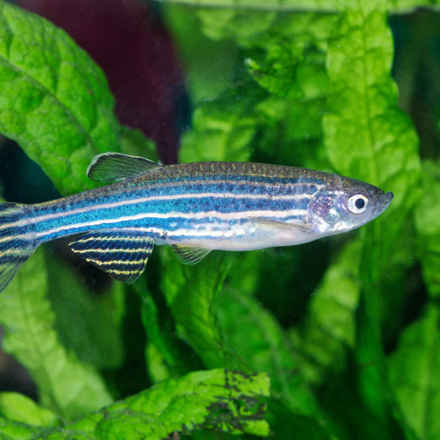The zebrafish’s high-acuity zone as a novel model for the human macula

Dr Takeshi Yoshimatsu, University of Sussex - £25,000
One of the constraints that research into macular disease can come up against is that very few animals have a macula, making it difficult to mimic the human eye.
What is the problem?
Only humans and primates have a macula, so this creates a challenge for researchers who are trying to model macular disease and test out new therapies.
Dr Yoshimatsu’s group at the University of Sussex previously discovered that zebrafish, which are small aquatic animals, feature a macular-like structure in the eye. This opened a new avenue of research, studying the disease’s mechanisms using zebrafish.
However, whether the zebrafish macula shares similarity with the human macula in gene expression has been unclear. Gene expression is the process of ‘turning on’ genes to produce proteins.
What did the project achieve?
Dr Yoshimatsu set out to discover if the zebrafish macula also developed and behaved similarly to ours. He examined the eyes of zebrafish and compared the data to existing information we have about the development of the human macula.
Dr Yoshimatsu used a technique to investigate gene expressions in individual zebrafish retina cells, called single-cell RNA-sequencing. He identified retinoic acid (RA) signalling, which is involved in various aspects of early retinal development and examined how activation of RA signalling impacts the health of the photoreceptors in the macula.
Dr Yoshimatsu discovered a previously unknown role of the RA in forming proper structural specialisation of the photoreceptor outer segment in the macula, which is responsible for detecting light.
The research also found that macular specialisation of cells occurs at an earlier stage of zebrafish eye development than previously thought, allowing us to understand more about the mechanisms underlying the formation of the macula.
What’s next?
The results identified opportunities for future research, to investigate photoreceptors and the outer segment structure of the macula.
Further research could lead to the creation of a macula for use in the laboratory, which could open up the field to considerably more research into macular disease from around the world.
See our other projects
Since 1987 the Macular Society has invested around £10 million in over 100 research projects.
Explore more research
Beating macular disease through funding medical research and improving the lives of those living with macular disease.
Get the latest research news from the Macular Society
To hear about life-changing research and treatments, subscribe to our monthly enewsletter today. Together we can Beat Macular Disease.
Sign up to our free email newsletter



